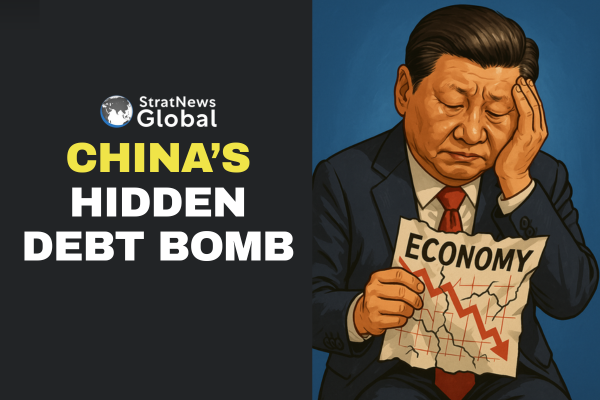China’s top leaders are known to use idioms to convey a message or signal something important. Recall the late Deng Xiao ping and his “a cat can be black or white as long as it catches mice.” It set the tone for China’s economic transformation so many years later.
More recently, paramount leader Xi Jinping said something which hinted at the country’s fiscal crisis.
“In the past GDP was used to judge heroes,” he said, but “One beautiful thing covered a hundred ugly things. Nowadays, in many matters, one ugliness covers a hundred beautiful things.”
The supreme leader did not expand on “one ugliness”, but officials in local governments knew what he was referring to: the trillions of dollars of debt held by local government financing vehicles (LGFV).
Partly these had been addressed through a debt restructuring initiative amounting to over $1.39 trillion. But it left unaddressed unpaid bills and trillions of dollars of bank loans.
The LGFVs were corporate entities created by local governments in China to raise funds for infrastructure and development. Once seen as an innovative solution to bridge funding gaps, these off-balance-sheet bodies have now become a financial risk, threatening to derail China’s growth model.
“LGFVs were created because local governments had very few tools at their disposal to meet their expansive spending responsibilities,” Amit Kumar, China scholar at the Takshashila Institution told StratNewsGlobal. “Even today, local authorities are responsible for close to 90% of all public expenditure in China, yet their ability to raise revenue remains severely constrained.”
This is because since 1994, the central government increased its share of the local revenues from 22% to 46%. It left the local governments with less money but the expenditure burden continued to rise, climbing from 70% of total spending in 1993 to around 85% today.
The local governments were also not allowed to introduce new taxes or adjust existing rates, effectively centralising all taxing authority in Beijing. New laws like the Budget Law barred local governments from directly borrowing from banks or capital markets.
“Even after the Budget Law was amended in 2014, local governments still can’t issue bonds freely, they’re limited by quotas set by the central government,” said Kumar. “That leaves a permanent shortfall.”
So local governments encouraged by Beijing, launched LGFVs that enabled them to access capital markets indirectly. Their usage soared after the 2008 global financial crisis, when Beijing actively encouraged local authorities to ramp up infrastructure spending through these vehicles.
LGFVs issued bonds and borrowed mainly from banks to fund infrastructure projects like roads, bridges and railways that could boost their local economies. Banks were quick to lend because these financing vehicles held significant land assets, often acquired cheaply from local governments and later sold to developers at a profit. This bolstered their balance sheets and made them appear creditworthy. The loans were implicitly backed by local authorities, giving the impression that if things went south, the government would bail them out.
The problem was LGFVs operated outside the strict regulations governing official government borrowing. They took on massive debt, snapped up land, and ran deficits. Encouraged by the prospect of higher land revenues, local governments kept pushing LGFVs to borrow more and matters went out of control.
Audits and independent estimates now suggest that China’s local government debt including “hidden” liabilities via LGFVs may exceed $8–9.5 trillion.
Today, with land sales in decline and income sources drying up, many of these entities are struggling to stay afloat. In response, Beijing has allowed some provinces to issue special refinancing bonds and encouraged clearer classification between government and enterprise debt. However, these interventions appear too modest to address the broader fiscal imbalance.
The real solution lies in reform. Unless China retools its local governance model granting provincial and municipal authorities greater revenue-raising powers, loosening borrowing restrictions under central oversight, and phasing out opaque off-budget financing its economy will remain dependent on a fragile, debt-driven engine.
The unchecked growth of LGFVs has laid bare structural weaknesses that can no longer be obscured by emergency borrowing or superficial stimulus. If Beijing fails to act decisively, the very mechanisms once used to fuel China’s rise could trigger a fiscal crisis with global repercussions.
Research Associate at StratNewsGlobal, A keen observer of #China and Foreign Affairs. Writer, Weibo Trends, Analyst.
Twitter: @resham_sng





